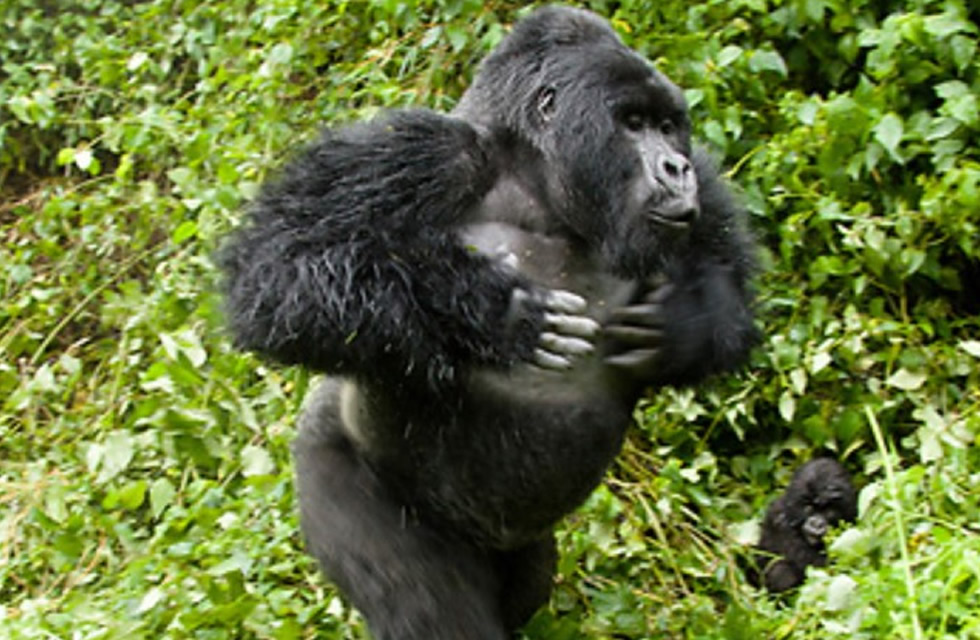Endangered mountain gorillas are large apes which are too native to the continent of Africa. They are typically divided into two groups and these are the mountain gorilla lives in the mountainous regions of central Africa. The low land gorillas live within the flat and dense forests of central Africa and western Africa. They are too similar and they do have few differences. As the mountain gorillas have long hair, the lowland gorillas have short, soft hair. The other difference is size as the low land gorillas are 4 to 6 feet tall (1.2 to 1.8 meters0 tall and weighing 150 to 400 ibs (68 to 181 kilograms), the endangered mountain gorillas are the same height though the they sometimes tend to weigh a bit more and they usually measure 4 to 6 feet tall and weigh 300 to 485 ibs which is 135 to 220 kilograms.
The habitats for mountain gorillas
Endangered mountain gorillas live in Uganda, republic of Rwanda and the democratic republic of Congo on the green volcanic mountains. The Lowland gorillas on the other hand live in the forests of the central and western Africa in the Equatorial Guinea, Angola, Cameroon, the Central Republic, Congo, Gabon and the Democratic Republic of Congo and a group of gorillas have a territory of up to 16 square miles which is 41 square kilometers.
What the mountain gorillas eat
They are primarily herbivorous animals and they do eat vegetation such as wild celery, shoots, roots fruits, tree bark and tree pulp though they have been known to eat small animals and insects and a male can eat up to 40 IBs which is equivalent to 18 kilograms each day. Their exact diet depends on where they live. They eat a diet that is about 86 percent leaves, shoots and stems; 7 percent roots; 3 percent flowers; 2 percent fruits; and 2 percent feed on ants and grubs.
The habits of mountain gorillas
They do live in groups which are called troops or bands and a band of gorillas have as many as 50 members, though sometimes a band consists of a few as two members and troops are led by a dominant male which is called a silverback and can often be identified by a gray strip of hair on his back. On each feeding time of the day, its purpose for a troop of gorillas and mornings and evenings are designated as the feeding time. In the middle of the day, the mountain gorillas take a nap, play with other gorillas or groom one another and at night, the gorillas settle in beds which are made from leaves and twigs to sleep.
The off springs of mountain gorillas
Just as human beings, the female gorillas are pregnant for a period of nine (9) months and they do usually give births to only one infant at a time while the new born gorillas weigh about 4 Ibs which is about 1.8 kilograms. During the time when they are about 4 months to 2 or 3 years old, young gorillas do ride on their mothers backs as a form of transportation and around 7 to 10 years, the young gorillas will become mature enough to have its own off springs. Time comes when the gorillas will leave its mothers to find a mate. In the wilderness, gorillas do leave for 35 years and 50 years in zoos.
The conservation status of mountain gorillas
According to the International Union for Conservation of Nature (IUCN) Gorillas are listed as Gorilla beringei species (mountain gorillas and Eastern lowland gorillas). They have been hunted and their habitat has been destroyed by mining and agriculture.

Leave a Reply